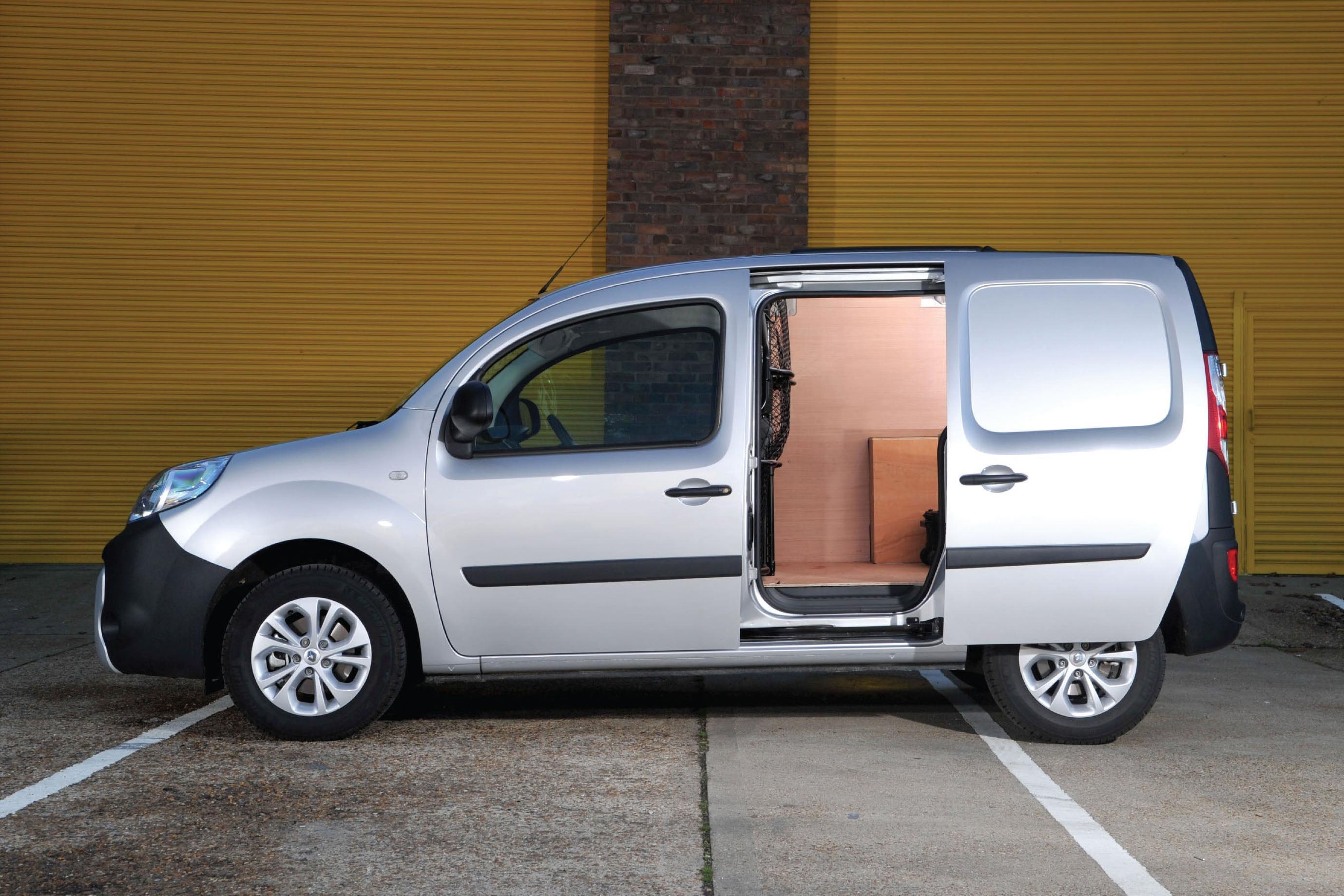Renault Kangoo Review 2025: Price, specs & boot space
Written by Dan Powell
Quick overview
Pros
- Affordable to buy and run
- Available with diesel, petrol or electric power
- Comfortable and easy to drive
Cons
- Early models are now 10+ years old
- Dull interior
- Rivals offer better payload
Overall verdict on the Renault Kangoo
"Simple, practical and cheap to run, the 2022 Renault Kangoo is one of the most affordable routes into small van ownership."
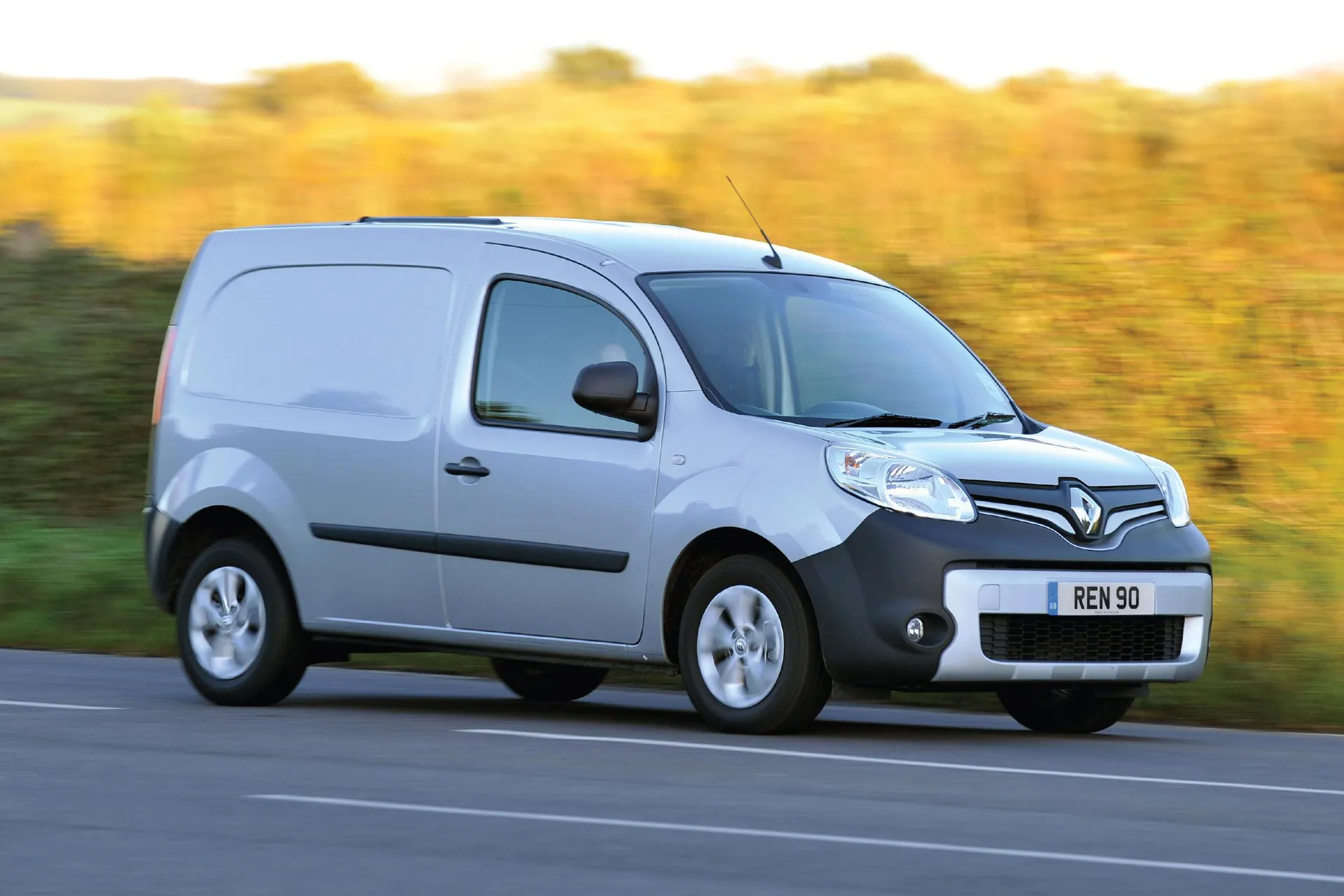
A low-cost alternative to the Ford Transit Connect, Volkswagen Caddy and Vauxhall Combo, the Renault Kangoo is a comprehensive small van that majors on value, comfort and practicality. If you are looking for a cheap commercial vehicle the Kangoo should be near the top of your small van shopping list.
The Kangoo name has been around since 1997 but this version was launched in 2010 as part of Renault's drive to rival the Peugeot Partner, Citroen Berlingo and Fiat Doblo. Over the years, the Kangoo has undergone a number of important updates with the most significant being the upgrade to Euro6 in 2016.
The Kangoo panel van is available in standard or long Maxi bodystyles. Maximum payloads range from 600kg to 800kg. Depending on which model you choose, the loadspace will range from 3.0 to 4.6 cubic metres. Renault also offered the Kangoo with a useful roof hatch option for a limited time, which means you can use the Kangoo to carry bulky items like ladders, copper pipes and large planks of wood.
Most Kangoo vans are powered by Renault's efficient 1.5-litre dCi diesel engine that combines punchy performance with cheap fuel costs. The Kangoo was offered with a 1.6-litre petrol engine for a short time, which means these models are extremely rare.
Official fuel economy for the 1.5 dCi diesel peaks in the region of 60mpg, while the 1.6 petrol is advertised with 36mpg. The Kangoo has a pretty good reputation for delivering its advertised fuel economy in the real world, which means fuel costs for all of the diesel variants should be low.
The Kangoo Z.E borrows a lot of its electric tech from the Zoe, which means it's super smooth to drive. Depending on which version of the Kangoo Z.E you choose, the electric van will cover between 75 and 140 miles on a single battery charge.
The Kangoo isn’t as good to drive as its rivals from Ford, Volkswagen or Vauxhall. And the 1.5-litre diesel engine can also be a bit noisy under heavy acceleration when the van is fully laden. The interior is also a little dreary, even by van standards, which means the Kangoo’s cabin quality reflects its general low-cost nature.
Minor complaints aside, the Renault Kangoo is one of the best vans for value. You also get a wide choice of versions and bodystyles, which means the Kangoo is popular with builders, delivery drivers and tradespeople who need a capable but affordable small van.
Looking for a used van for sale? We've got 100s of Renault Approved Used Cars for Sale for you to choose from, including a wide range of Renault Kangoo vans for sale.
Is the Renault Kangoo right for you?
For sure, the Kangoo is a bit unrefined, a tad noisy on the motorway and lacking in the tech department. But the Kangoo's rivals are generally more expensive to buy and we think Renault's small van delivers excellent value.
We rate the long Maxi model as the best in the Kangoo range, with its extended loadspace providing up to 4.6 cubic metres of storage space and a maximum payload of 800kg.
The 1.5 dCi diesel is a strong engine with peppy performance and low running costs, which makes it popular with builders and tradespeople. However, if you are looking for an affordable electric van, the Kangoo Z.E is a good option thanks to its practical EV range and impressive payload.
What other vans are similar to the Renault Kangoo?
The small van market is highly competitive. The Renault Kangoo rivals the Ford Transit Connect, Vauxhall Combo and Volkswagen Caddy. However, if you are looking for value, you should also consider the Fiat Doblo which is cheaper to buy than the Kangoo but provides similar load moving potential.
Comfort and design: Renault Kangoo interior
"Even by van standards, the Kangoo's interior is somewhat bland with lots of cheap and dull plastics. However, Renault gave its small van a major revamp in 2016 and these models provide the best comfort and spec."
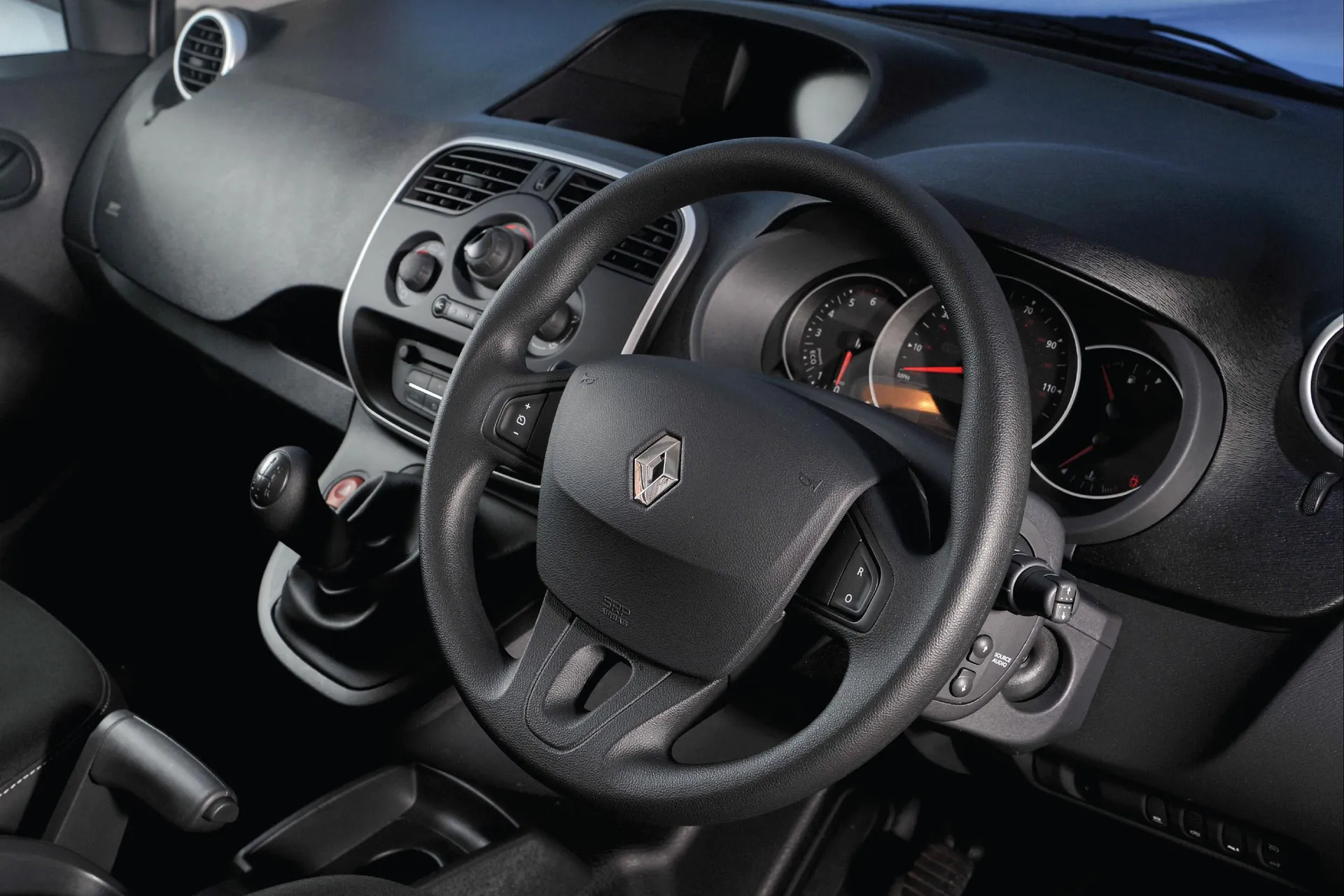
The Renault Kangoo has been around for a very long time. The latest model is actually based on a van that was launched in 2010, which means the oldest Kangoos are now starting to look and feel their age.
The design and layout is very bland with lots of cheap but hard-wearing grey plastics. The Kangoo is available with two or three front seats but your middle passenger may find the lack of leg and knee room a little claustrophobic on a long journey. That said, the Kangoo's driver's seat is comfortable with lots of adjustment and firm seat back support.
The layout of the dashboard isn’t the best in the small van class; the touchscreen navigation is buried high into the dashboard and this makes it difficult to follow route commands and operate the touch screen.
Quality and finish
The interior of the Renault Kangoo gives the impression it has been built to last with lots of chunky plastics that feel like they’ve been bolted together with a sense of purpose. As a result, you don't get any worrying rattles or squeaks from the interior fittings.
Renault gave the Kangoo a major update in 2016 that included a significant upgrade to the quality of the interior with better plastic trims and cloth materials for the seats.
Infotainment: Touchscreen, USB, nav and stereo in the Renault Kangoo
The Renault Kangoo is generally well-equipped as standard. Bluetooth and USB smartphone connectivity has been fitted as standard since 2013. High spec versions of the Kangoo also get a CD player, DAB audio and air con.
Renault has never fitted sat nav as standard on the Kangoo but it is a popular option and this means lots of used vans tend to have it fitted. The system is based on Renault's R-Link touchscreen navigation that provides 3D maps and online traffic updates: however, due to its positioning deep inside the dashboard, it can be difficult to operate.
It is also important to note that the R-Link sat nav is based on a TomTom Live subscription-based system that needs to be renewed to retain access to live route and traffic updates. Typically, the Kangoo is sold with a three year TomTom subscription, which means vans that are older than three years of age may not necessarily have live sat nav services.
Space and practicality: Renault Kangoo load space
The Renault Kangoo panel van is available in standard or Maxi bodystyles. The entry-level standard van will provide between 3.0 - 3.6 cubic metres of loadspace while the longer Maxi model will extend this to 4.0 - 4.6 cubic metres depending on spec
Both the standard and Maxi models are available as crew vans, which adds a second row of seats that cuts loadspace to 1.3 (standard) or 2.4 (Maxi) cubic metres. However many of the crew vans feature flexible seating, which means you can fold the second row of seats flat into the floor when they are not in use.
The load area of the Kangoo is practical with most vans getting a single or twin side sliding doors. The maximum load length of the standard van is 1476mm while the Maxi extends this to 1862mm. We would recommend specifying the Kangoo with the swivelling bulkhead, which lets you use the full load width of the van by folding the front passenger seat away and bending the bulkhead around the driver’s compartment.
The Kangoo can’t match its key rivals for maximum payload. Generally speaking, the Kangoo’s payload rating will range from 650kg to 800kg - you’ll need to check your van’s spec to establish its exact kg limit. Due to the position and weight of its batteries, the payload of the all-electric Kangoo Z.E - in both standard and Maxi versions - is limited to 640kg.
Handling and ride quality: What is the Renault Kangoo like to drive?
"The Renault Kangoo's handling and ride quality is optimised for comfort, with its soft suspension soaking up most lumps and bumps in the road. The downside to this is a lot of body lean in the corners, which means the Kangoo isn't as rewarding to drive as its rivals."
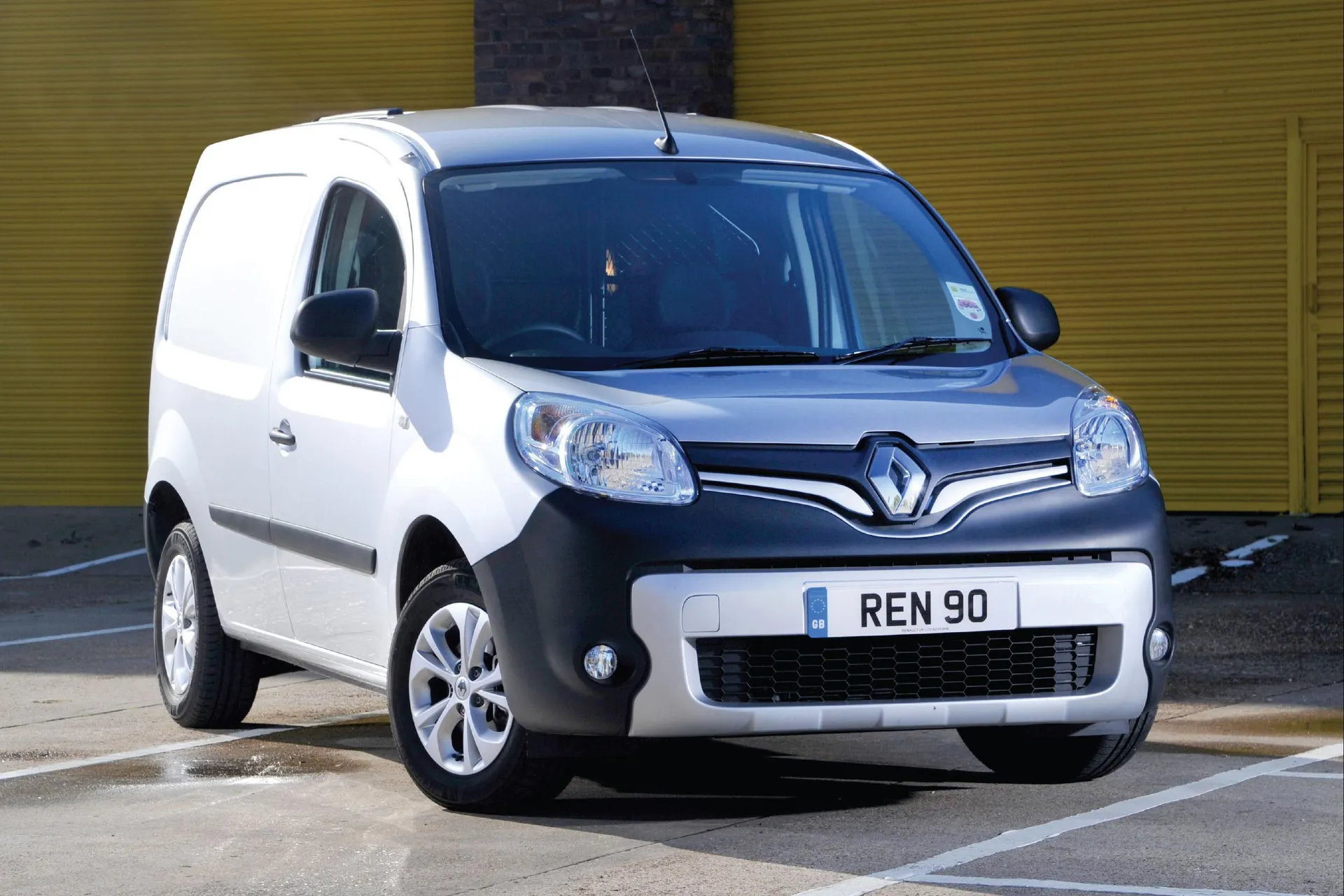
If you are looking for a comfortable small van the soft-sprung Renault Kangoo is unlikely to disappoint. We rate it as one of the best for road comfort, with potholes and rough roads all ironed out by a satisfying soft thud.
On the downside, the Kangoo isn’t as involving to drive as the Ford Transit Connect, with its spongy suspension providing a fair bit of body lean when carrying moderate levels of speed through a corner.
Motorway travel is comfortable with the soft suspension provisioning a composed and car-like experience. This means you can rack up the miles without feeling overly tired, although the Kangoo can get a bit noisy when pushing the engine or driving on a windy day.
The Kangoo’s huge windscreen provides excellent visibility and the van’s blindspots are kept to a minimum thanks to the large door mirrors and front pillars that separate the front screen from the doors. This makes the Kangoo easy to drive in a town or city, with its light steering and 1829mm body width allowing you to slip through narrow streets with ease.
What engines and gearboxes are available in the Renault Kangoo?
The Kangoo is offered with Renault’s excellent 1.5-litre dCi diesel engine. At launch, the four-cylinder diesel provided 70PS, 85PS or 105PS power outputs.
In 2016 the 1.5 diesel engine was upgraded to Euro6 emission standards and power outputs were revised to 75PS, 90PS and 110PS. Renault revised the 1.5 diesel engine again in 2019 to 80PS, 95PS and 115PS.
Unless you need to use your Kangoo for towing, we’d recommend the 1.5 dCi with 90PS or 95PS - these engines strike the best balance between performance and fuel economy.
A non-turbocharged 1.6-litre petrol engine was offered for a short time but enjoyed limited success due to its high fuel costs and lacklustre performance. As a result, it’s very rare to find a petrol Kangoo for sale.
Most Kangoos use a five-speed or six-speed manual gearbox. Renault added a dual-clutch automatic transmission to the Kangoo range in 2017 as an optional extra.
The Kangoo is also offered as an all-electric van with a 33kWh battery that is linked to a 44kW electric motor. The electric van is badged as the Kangoo Z.E and its electric motor develops 60PS with power delivered to the front wheels.
What is the maximum range in the Renault Kangoo Z.E?
Renault has offered an electric version of the Kangoo for a number of years. Early versions of the Kangoo Z.E will cover up to 75 miles on a single charge. However, since 2017, Renault has sold the Kangoo Z.E with a powerful 33kWh battery that will cover between 125 and 140 miles.
Refinement and noise levels
The Renault Kangoo isn't particularly refined, with lots of engine and road noise making its way into the cabin. The body shape of the Kangoo also generates a fair amount of wind noise, too.
Both the Ford Transit Connect and Volkswagen Caddy are quieter and more refined, but it's important to note that both of these vans are generally more expensive to buy.
Safety equipment: How safe is the Renault Kangoo?
All versions of the Renault Kangoo are fitted with a full-size bulkhead that separates the driver and passengers from the loadspace area. Crew vans are fitted with a moveable bulkhead that folds forward when you fold the second row of seats away into the van floor.
The Kangoo doesn’t get any driver aids like lane keep assist or adaptive cruise control, which reflects its age somewhat, but you do get a spare wheel and a scattering of airbags that should protect the driver and front passengers in the event of an impact.
MPG and fuel costs: What does a Renault Kangoo cost to run?
“The Renault Kangoo 1.5 dCi diesel has a reputation for good fuel economy with many drivers reporting 50mpg or better on the road."
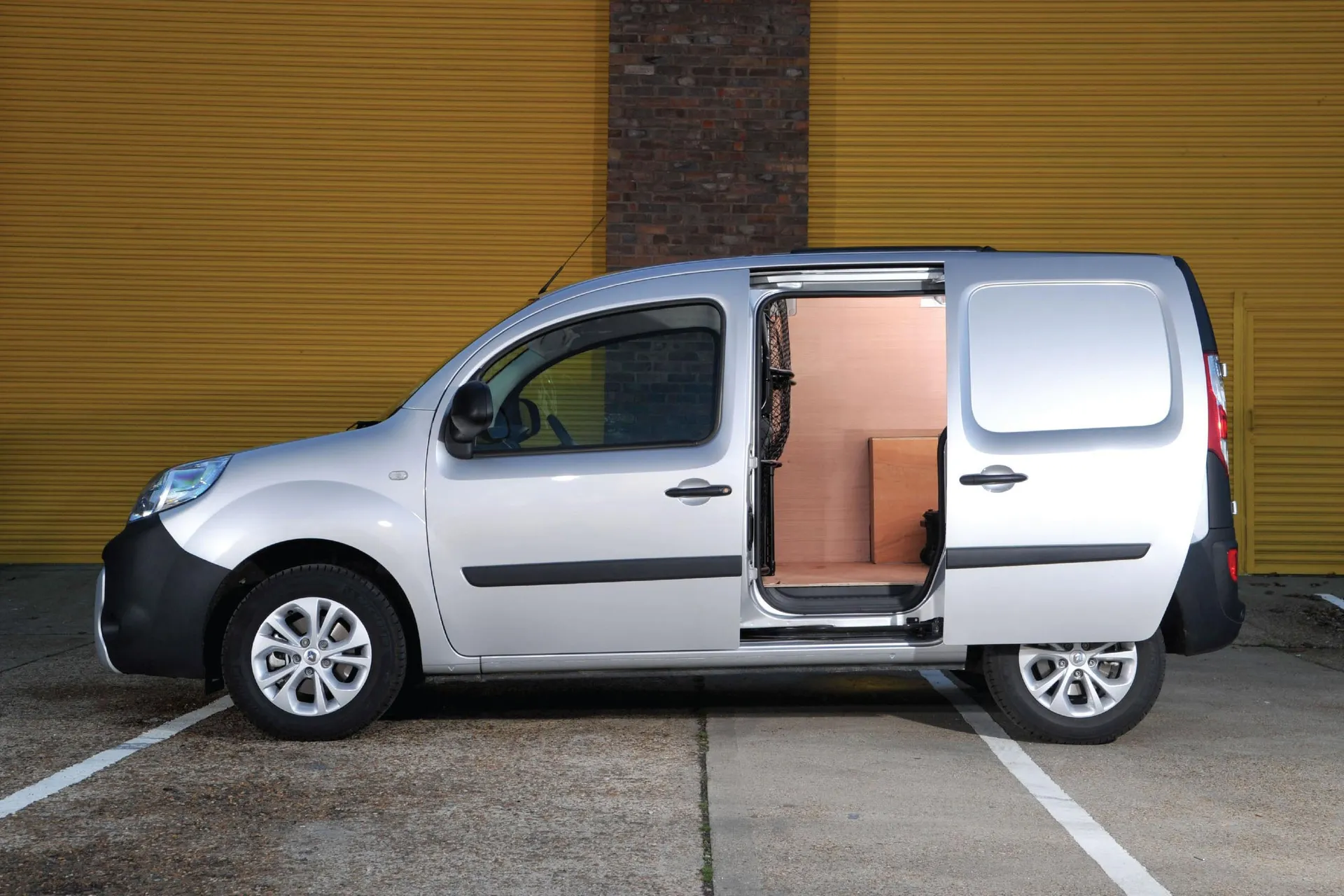
The long-serving 1.5-litre dCi diesel engine provides the lowest fuel costs with advertised economy ranging from 51mpg to 61mpg. These figures are generally reflective of real world driving, according to Real MPG figures at Honest John Vans with the 70PS, 75PS and 90PS versions being the most efficient engines in the Kangoo range.
The 1.6-litre petrol Kangoo is very rare these days and the official fuel economy for this four-cylinder non-turbocharged engine is around 36mpg.
How reliable is the Renault Kangoo?
The Kangoo is one of Renault's best selling vans and its reputation for reliability is generally good across all models.
MOT pass rates for the Kangoo are somewhat mixed. According to HonestJohn.co.uk, 70% of six-year-old Kangoo vans pass their MoT - a result that's 31% worse than other vans of this age.
Insurance groups and costs
Insurance costs for small vans tend to be low and this is true for the Renault Kangoo. The insurance rating for the Kangoo starts at Group 2 for the cheapest and least powerful vans and rises to Group 5 for the 100+PS diesel versions in Business+ trim.
However, when shopping for van insurance, make sure you always check the level of cover as the cheapest deals may not provide a like-for-like replacement for expensive tools or equipment left in the vehicle.
VED van tax: What is the annual road tax on a Renault Kangoo?
Vans and pick-up trucks are classed as commercial vehicles and are taxed differently to cars with the VED rate determined by the date the vehicle was registered. In most cases, Renault Kangoo drivers pay a flat rate of £275 a year.
If you buy a Kangoo van that was registered between 1 January 2009 and 31 December 2010 you will pay a lower rate of £140 per year.
How much should you be paying for a used Renault Kangoo?
"The Renault Kangoo is one of the cheapest routes into small van ownership and a budget of £10,000 should get you a three or four-year-old van with modest mileage and a full dealer stamped service history."
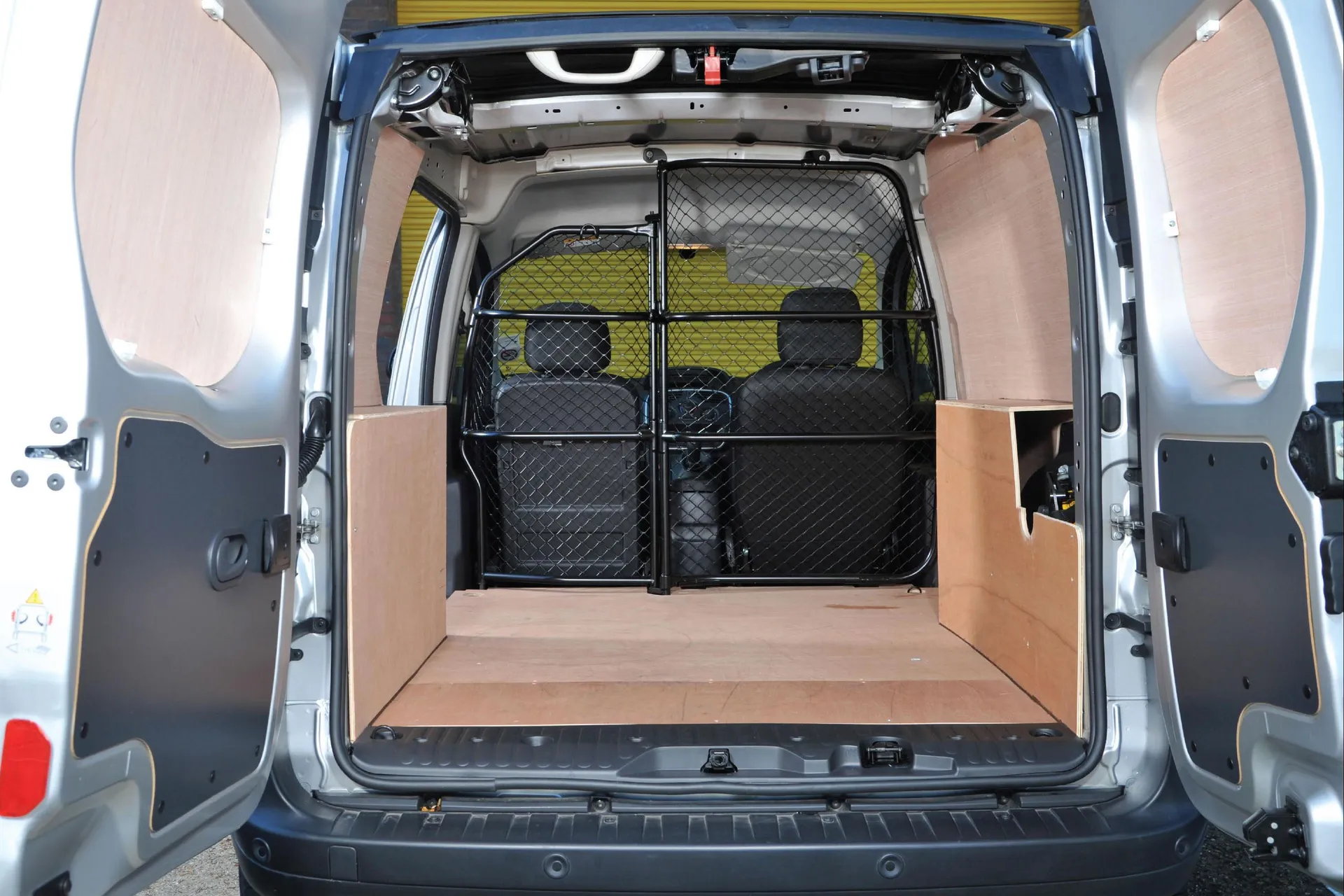
The Kangoo is a big seller for Renault and this means there is lots of choice on the used market with a budget of £7000 (before VAT) being enough to secure a five or six-year-old example from a dealer.
Spend £10,000 and you should find a three or four-year-old Kangoo with modest milage at a Renault van dealer, while vans from 2020 or 2021 will start in the region of £17,000.
Trim levels and standard equipment
Since 2016, the Renault Kangoo model line-up is split between Business and Business+ trim levels. Renault has produced a number of Sport special editions over the years that get more equipment as standard - these typically include alloy wheels, front fog lights and disc brakes at the front and rear.
The Kangoo in Business trim gets a sliding door on the lefthand side, along with plastic bumpers, electric door mirrors, spare wheel, DAB audio and CD player. Business+ trim adds body-coloured bumpers, folding electric door mirrors, air conditioning, overhead parcel shelf, load area rubber flooring and a centre console with armrest.
Ask the heycar experts: common questions
What is the dimensions of the Renault Kangoo van?
Is the Renault Kangoo available with an automatic gearbox?
Can I get the Renault Kangoo as a camper van?
Get our latest advice, news and offers
Keep me updated by email with the latest advice, news and offers from heycar.
By submitting you agree to our privacy policy
